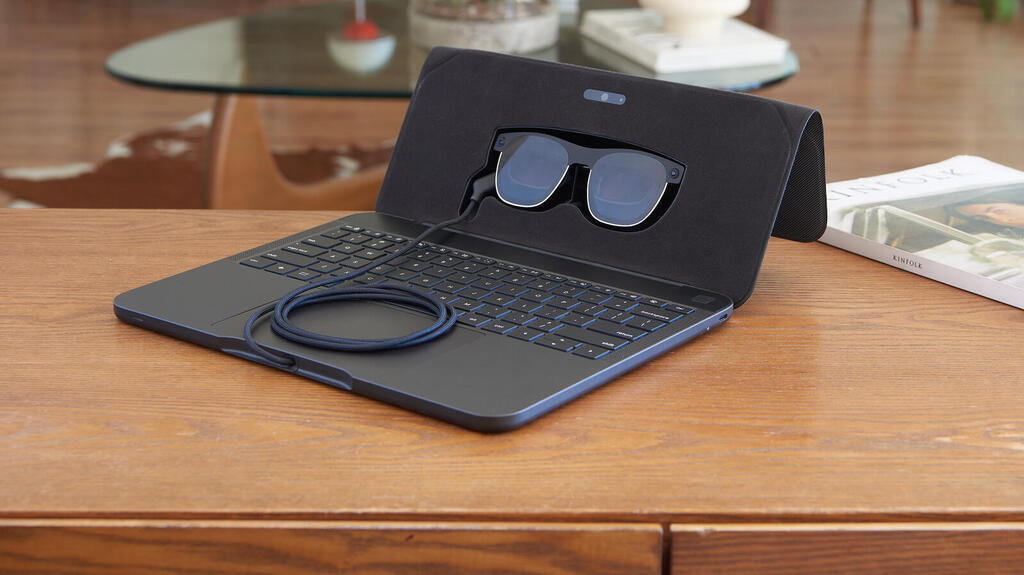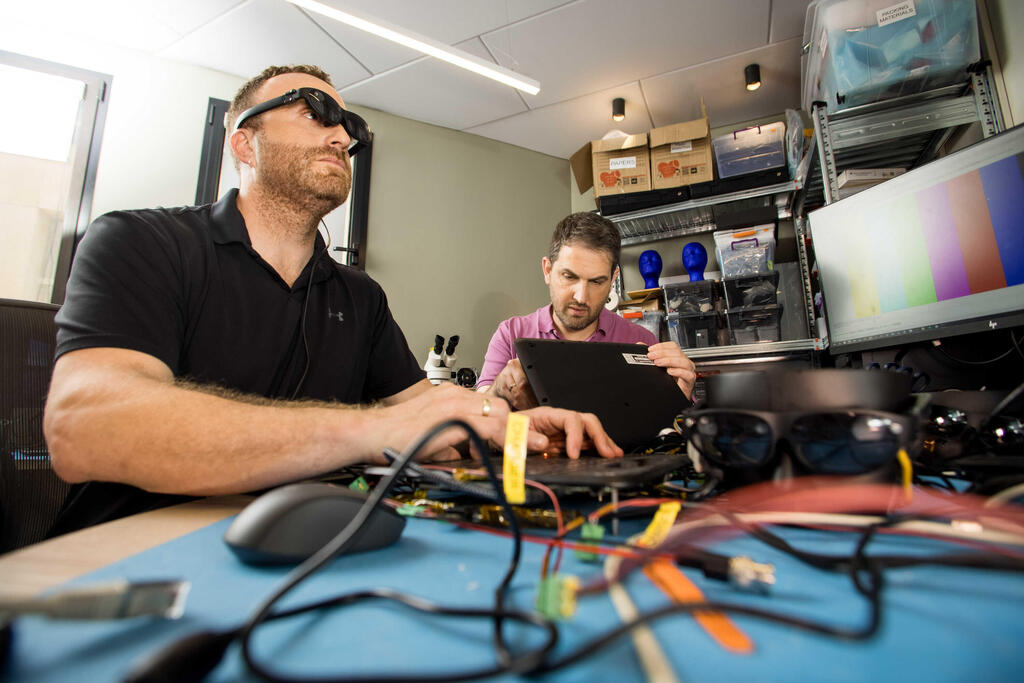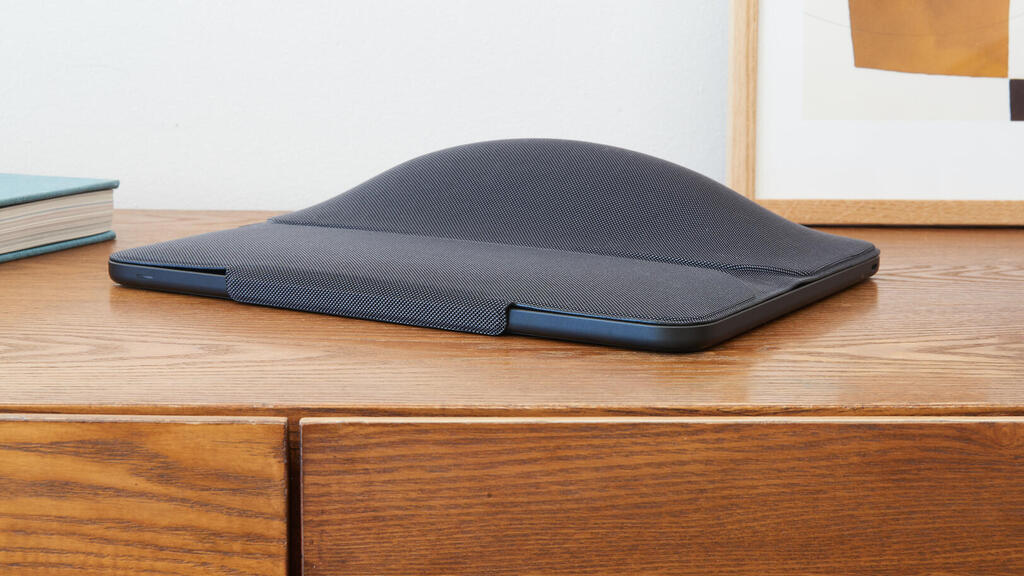Israeli company Sightful believes its screenless laptop is ready for the spotlight. About a year after releasing a beta version to a select group of users, Sightful has launched the Spacetop G1 on Thursday.
This consumer laptop, priced at $1,900, will be available in the United States starting this fall. Potential buyers can place a pre-order for the G1 today for $100. There is no information yet on when the product will be available in other countries.
The Spacetop replaces a traditional laptop screen with augmented reality glasses that offer a 50-degree field of view, equivalent to a 100-inch screen in front of your eyes. Unlike Apple’s Vision Pro, which provides a virtual reality experience that includes video of the real world, the Spacetop features a semi-transparent screen. The glasses also come with prescription lens options, including multifocal lenses, all included in the G1’s price.
Sightful’s hardware partners for the Spacetop include Wistron, one of the world’s largest computer manufacturers, AR glasses company Xreal, and Qualcomm. Since the initial unveiling of the Spacetop last year, the AR field has seen significant additions with Meta launching its Quest 3 and Apple its Vision Pro. Sightful’s laptop is fundamentally different from these products, which are primarily aimed at entertainment applications, by focusing on productivity. Sightful claims to be working with some of the world’s largest organizations to integrate its laptops into their operations.
Why would an organization want to purchase Android-based laptops for $1,900 each? If the organizational work is mostly cloud-based, a laptop that eliminates the need for screens (with some organizations even buying home office screens for their employees) offers numerous advantages, from enhanced privacy to reduced power consumption.
At the company’s Tel Aviv office, Sightful COO Tomer Kahan explains that the company learned a lot about potential users during the beta phase: from desired use cases to hardware shortcomings in the previous version (the touchpad, for example, has been significantly improved), and the situations where a screen still holds value that glasses cannot replace.
A 100-Inch screen without a media player
The new G1 is similar to the beta version but comes with significant hardware and content upgrades. Besides the improved touchpad, it features lighter and more comfortable glasses, a small OLED screen above the keyboard that can display notifications, and various user experience enhancements. Actions like zooming in, scrolling, and moving the screen in space are easy and intuitive. A new mode even allows you to lock windows and move around with the Spacetop.
However, the device is still primarily intended for work scenarios. For instance, while it has 128GB of storage, it currently lacks a media file player. There are no video service apps either, due to copyright restrictions that make it difficult to stream protected video content to AR glasses. This means that if you board a plane with the Spacetop, you won’t be able to watch a movie downloaded to your computer – a pretty obvious use case for glasses that create a 100-inch screen in front of you.
A computer that could define the future for other manufacturers
Is this enough to conquer the computing world? It’s not supposed to be. Kahan repeatedly described Sightful as a "product company" but noted that their vision isn’t to produce millions of Spacetop G1 units and compete head-to-head with other laptop manufacturers. Instead, Sightful aims to define experiences and interfaces through their hardware and software combination, which they will offer to other manufacturers. This is why, according to Kahan, Sightful will continue producing its own hardware for at least the next decade. The challenges they solve in hardware production help them shape their vision for the future of this field.
Kahan and the Sightful team’s optimism is quite infectious. When I tried the beta version, I saw the value in the Spacetop's core idea. I can see it significantly enhancing my work experience, which involves jumping between many windows spread across two or three screens.
In the consumer version, it feels even more polished. A new mode, for example, darkens the areas in your field of vision where
you haven’t placed screens, helping you focus on work even when facing a bright, open window. The improved touchpad and gesture interface make it much easier to focus on and move windows around. The chassis has been upgraded to better position the built-in webcam. It feels like a computer I could spend an entire day with.
However, I haven’t spent an entire day with it, so I'm cautious about forming an opinion on what did feel impressive and cool. I don't know if the battery actually lasts 8 hours as the company claims, and the demonstration I received of the screen's ability to maintain window positions while in a moving vehicle (a critical challenge since the computer needs to understand that you're not moving, only the world around you is) was limited to a leisurely ride in an office chair at a very slow speed.
Moreover, I haven't covered even a fraction of standard use cases, especially those involving more than one person. All I can say about those is that Sightful's team seems to be thinking a lot about them and is trying to find solutions for all those moments when the computer is not just a work tool but also a tool for collaboration. Are these solutions reasonable? Are they good enough? We’ll find out in the fall.




